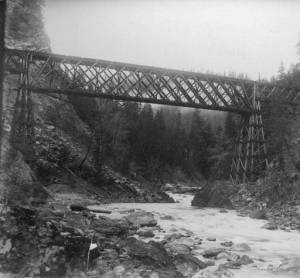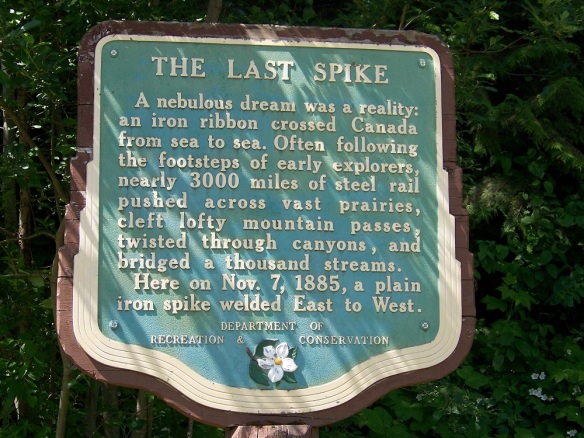The British colonies in North America could see the advantages of uniting together as their counterparts south of them had done. However, there was a problem: they were separated by distance. The overland journey from the settlements up the St. Lawrence river to New Brunswick and Nova Scotia was very difficult. Travelling to the Red River colony was best made through the United States. Vancouver Island and the mainland of BC were cut off by mountains. How could they overcome this and become one country? The answer seemed to be building a railway.
 Railways had been started in the east, and some were working out well, but they were expensive to build and with a small population, the money was hard to come by. Could a railroad right across Canada be possible?
Railways had been started in the east, and some were working out well, but they were expensive to build and with a small population, the money was hard to come by. Could a railroad right across Canada be possible?
Sir John A Macdonald, who became Canada’s first prime minister, was determined to bring this about. In 1867 the Dominion of Canada was formed which included New Brunswick, Nova Scotia, Ontario and Quebec. Shortly after this arrangements were made to purchase the land owned by the Hudson’s Bay Company which was the land that lay between the great lakes and the rocky mountains.
In 1871, British Columbia decided to become a province of Canada too. The Canadian Prime Minister promised that within ten years a railway would be built that would stretch right across the dominion and unite the provinces.
Sir Sanford Fleming divided the country into three parts and sent out survey crews to mark out possible routes. Their goal was to map the area and find the flattest ground and the shortest route. The railroad would have to pass through solid rock, cross mighty rivers and swamps, and wind around mountain passes.
Imagine the work involved in building 3000 miles of railway. All the cutting trees and clearing to make a way, leveling of the land, building of bridges, filling in bogs only to have everything sink into the ground and having to start over, hacking out paths on the sides of mountains.
The railroad took several years to build, but it happened. Thousands of men were employed to build it, including a large number of labourers brought from China to help complete the western part. Sadly there was also significant loss of life from the difficult and sometimes dangerous working and living conditions.
The “last spike” was driven into the rails at a village called Craigellachie, in the mountains of British Columbia on 7 November 1885. It was now possible to ride a train all the way from coast to coast.

 If you can, read All Aboard in the Canadian Flyer Series.
If you can, read All Aboard in the Canadian Flyer Series.
Activity: Find out how a steam engine works here at Peter’s Railway.


NICE 👍👍